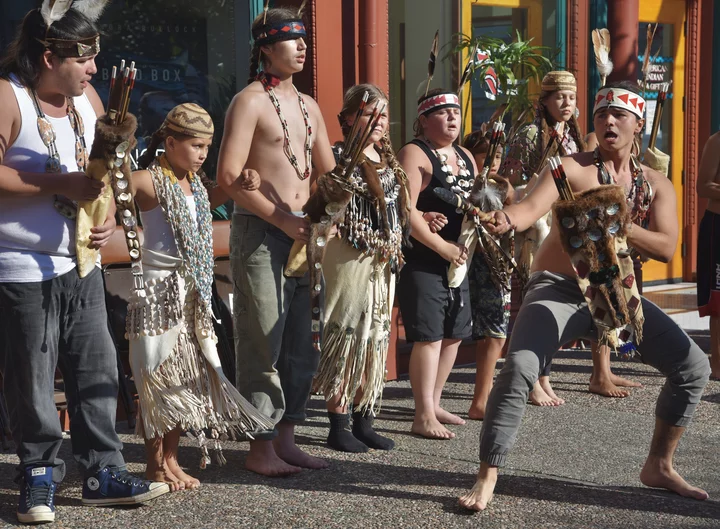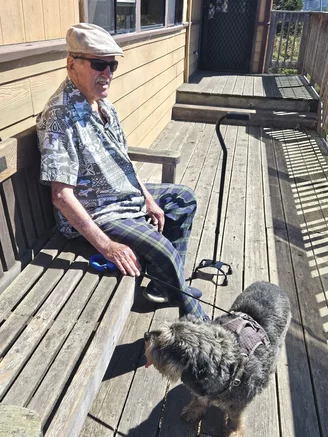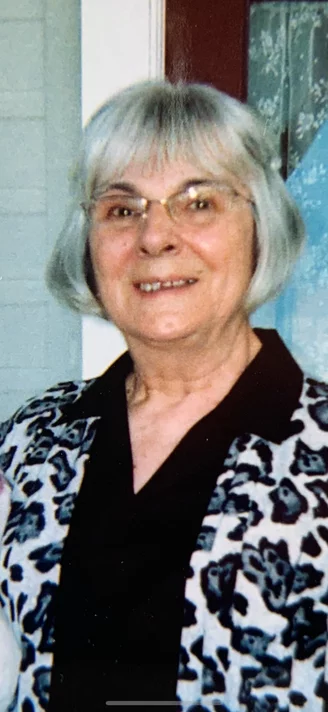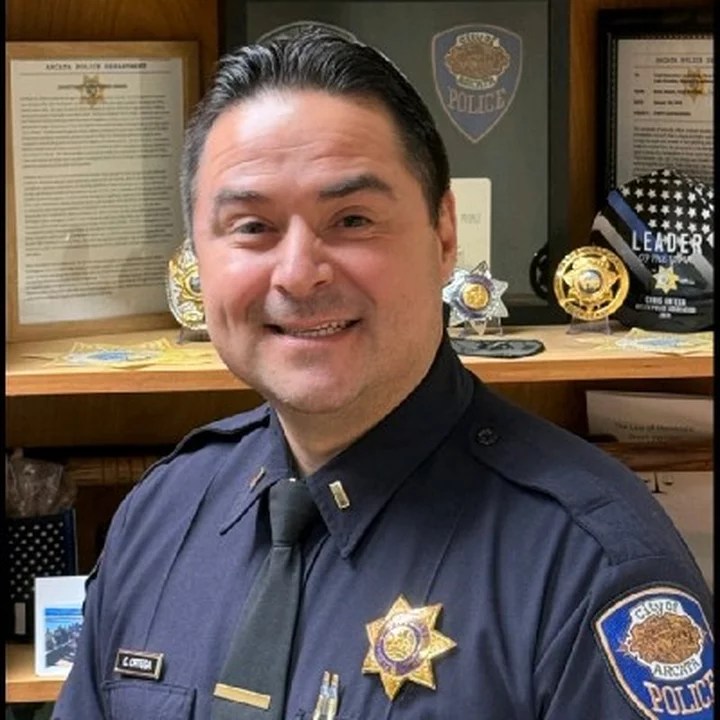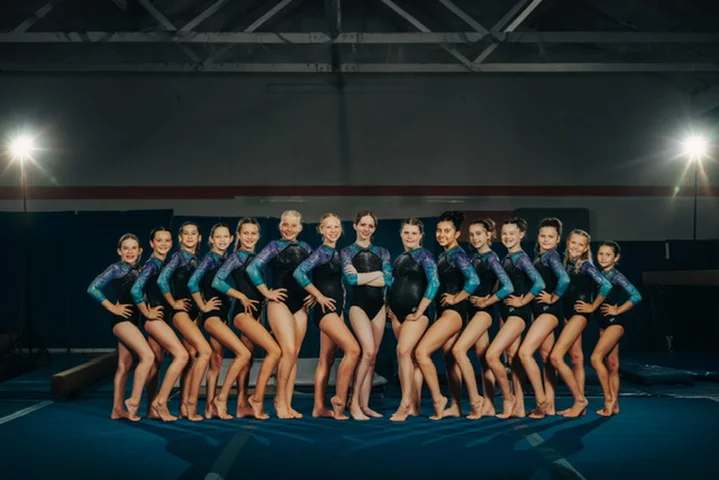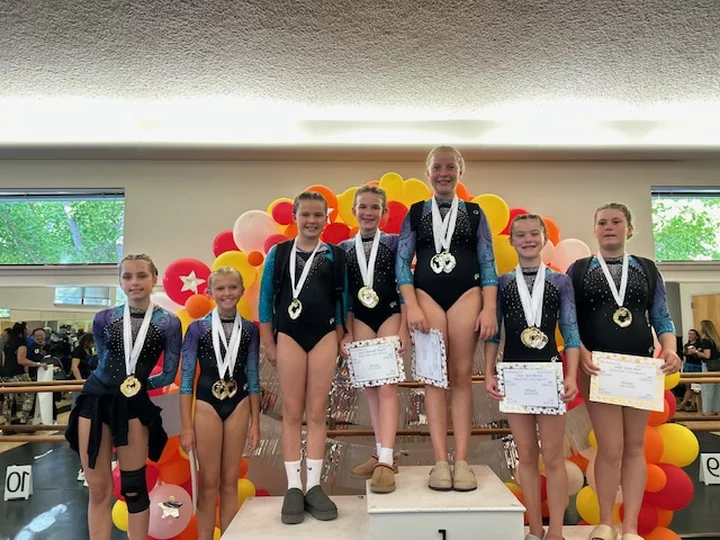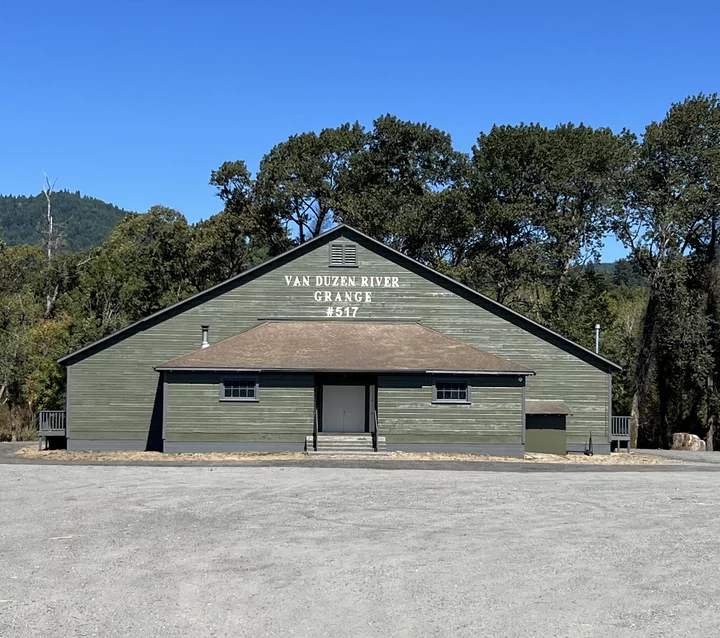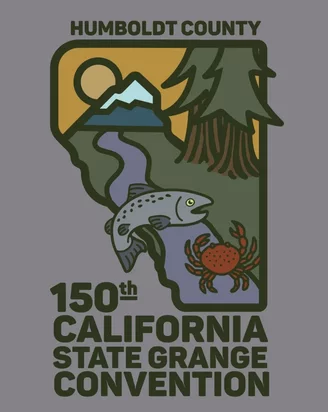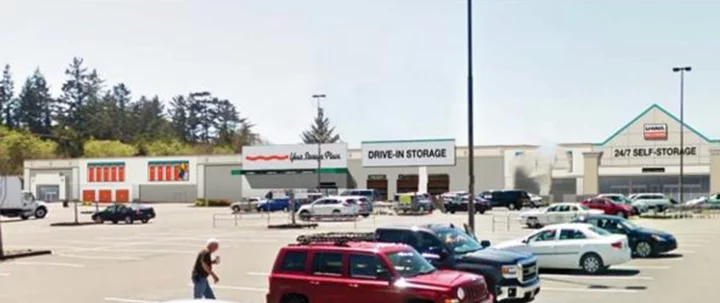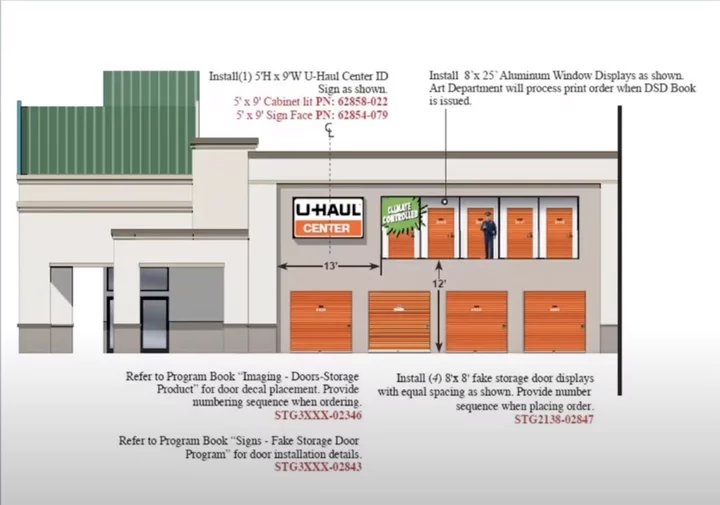HUMBOLDT HISTORY: Fixing the Earth With Music and Dance
Jerry Moore / Saturday, Oct. 4 @ 7:55 a.m. / History
Wiyot brush dancers in Old Town Eureka week before last. Photo: Izzy Vanderheiden.
It was a warm day in early October. The trees in the valley were starting to turn gold and brown. A light breeze was in motion, and I was watching a centuries-old tradition of making the world a better place through performing the right songs, in the right place, with the proper regalia, the right movements, and the proper spiritual intent.
I was watching a performance of the Hupa Jump Dance, which is performed in a ten-day sequence every two years. I was merely an observer, but the rhythms, the music, the atmosphere and the sense of drama created an unforgettable experience, and a sense of honor at being able to witness such important work in progress. I came away feeling glad that a people cares enough about the earth and the natural world to dedicate its most sacred cultural traditions toward making the earth a better place for future generations. At that moment, this truly seemed the center of the world.
This article is an “outsider’s” impression of traditional music and dance in the life of Humboldt County’s Native American population—the Hupa, Yurok, and Karuk tribes. An “insider” would certainly offer different perspectives and I would encourage readers to make contact with some of our native people themselves to develop as complete an understanding as possible and perhaps even adopt some of the useful beliefs that are so integral to America’s indigenous peoples.
For centuries, the Hupas, Yuroks (meaning down river from Weitchpec), and Karuks (up river), have shared many of the same cultural traditions. Among these are rituals that include the Brush Dance, the Jump Dance, and the world renewal ceremony, the White Deerskin Dance. Each dance is performed for a different purpose and uses different ceremonies, but all dances are performed to heal, maintain or increase contact with the spiritual world.
The Brush Dance
Brush Dances might occur a number of times during the summer and fall months and are usually sponsored by a family. The dances always take place in a specially constructed pit symbolizing a house in which the roof planks have been laid out to the side as seating for observers. The dance was originally intended as a healing ceremony for a sick child, but in modern times it has an added social function, bringing together many families from the three tribes. The dance is really a series of dances beginning on a Thursday, starting at dark and continuing to around midnight. Friday is a rest day followed by the all- night dance starting on Saturday at dark through sunrise on Sunday. The ending of the Brush Dance, coinciding with the sun rising over the mountain, is sometimes described as songs, and best singers are all part of the culmination. All the local tribal communities have Brush Dance pits that are used during the season. They can be seen at Sumeg Village in Patricks Point State Park, and the ancient village site of Takimildin in Hostler fields, a short distance north of the shopping center in the Hoopa Valley.
At one Brush Dance, I watched as representatives from all three tribal groups participated in the dance. Each group had established a small camp some distance from the pit, where they assembled the proper Brush Dance regalia and prepared for their turn to dance. The men, boys and unmarried girls, perhaps 20 or 25 in number, would then file into the pit area and position themselves around the perimeter. In the center of the pit, there was a small fire attended by a young girl and the medicine woman with the sick child facing east. The songs were started by a lead singer with the rest of the men joining in, singing backup, such as: oba, oba, oba. The songs are quite short, usually only a minute or two, but each is repeated three times, with embellishments each time. During the singing, all the an almost magical experience because the best regalia, best members dance by bouncing on their heels, accentuating the offbeat. Often, as the songs progress, one or two of the men (or boys) might add to the drama and excitement when they “jump center,” using more active steps and letting out some rhythmic yelps. The set of songs may last only about twenty minutes, after which the dancers retire back to their campsite. Following an interlude of approximately twenty minutes, one of the other tribal groups will then file into the pit for a set of its own songs.
Songs are not “composed” as such through individual creativity, but are conceived as being given by the spirit world. They might even be thought of as having always existed since the beginning of the world. Songs are believed to contain spiritual power, meaning that the spirit world can be influenced if it is a good song well performed. When “outsiders” hear a song performance, they might detect a “sobbing” or crying quality. This usually indicates the singer’s strong spiritual intent.
Brush Dance songs are divided into “heavy” songs, the most deeply spiritual ones, and “light” songs, which may also contain humor. The text of the songs are usually a combination of vocables and actual words from the language. An important fact regarding the music of the Hupa, Karuk and Yurok is that virtually all of the songs are considered the property of an individual ora family. There is no such thing as a common repertoire of songs in the public domain. For one person to sing another person’s song without permission can be a serious offense. However, songs can be traded like any type of personal property.
White Deerskin Dance
The White Deerskin Dance is a ten-day ceremony requiring many days of spiritual and material preparation, including the resolution of any bad feelings among tribal members. Each day, a portion of the dance is performed at a different location on the Trinity River, starting upriver at the south end of the reservation. A mid-week evening is chosen for the Boat Dance segment with men standing in floating, carved-log canoes, singing the appropriate songs. The boats approach the shore ten times before finally landing. After coming ashore, the singers do the Mock Dance, indulgitig in some humorous antics, balancing the seriousness of the other portions. This event usually attracts a large audience. The final dance is held on Bald Mountain, at a traditional site under a canopy of oak trees. The analogy of being in church is an apt one with this mode of honoring the natural world. Food is part of the ceremony, with tribal members inviting guests to join them at the camp table.
The specific White Deerskin Dance segment is performed by about a dozen men, some of whom hold poles covered with decorated white deer skins. At various times during the songs, two of the other men, carrying large flint pieces and blowing soft whistles, will cross in front of the men who hold the poles. A set of songs takes about thirty minutes, after which the men retire to their camp and another team comes in to dance. This dance is one of the most sacred of the world renewal ceremonies. The purpose of the dance is to make sure there will be plenty of salmon, acorns, and other resources that sustain life, and to prevent sickness and natural disasters. Contemporary tribal members are well aware of the precarious state of the natural world as it becomes more and more populated by peoples with different value systems. In modern times, the White Deer Skin Dance is organized and presented every two years.
Gambling Songs
The spirits are also believed to provide luck in native gambling activities. If a man has good songs and sings them with sincerity, he can become wealthy and fortunate in his life. Gambling songs are the only songs accompanied by a drum and sometimes a rattle. These are the only instruments used by the Hupa, Yurok and Karuk peoples. In earlier times the Yurok people used an elderberry flute for courting and recreational purposes, but this has since been discontinued. The gambling card games consist of two teams, each of which has a principal player with a back-up singer and drum player. The cards are a collection of 40-50 small thin sticks, one of which has a black mark. These sticks are divided randomly into two bundles, one for each hand. The gamblers try to guess which hand contains the stick with the black mark after the songs, drumming, and hand gestures are completed. The stakes can be quite high.
These songs and dances have been an integral part of Hupa, Yurok and Karuk lives since before recorded history. In the earlier part of this century, the cultural practices were discouraged and even prohibited by the new governing entities that established the reservation policies. Many of the elders with vital knowledge became reluctant to continue the traditions until the 1950s when controls were relaxed. Then a period of renewed interest in the dances began and the important function the dances serve in the lives of the people was recognized. In 1994, the Karuks performed the first Kaurk Jump Dance in 100 years.
There is currently a strong belief among the elders that participating in the dances, and gaining a good understanding of the traditional value systems might serve to counteract the negative influences of modern times. The elders note that their younger members need identity, stability and a sense of belonging to a community. The number of elders who know the formulas and the proper way of doing the ceremonies is shrinking. The elders hope the young people will see the need to learn from the elders and participate in the ceremonies, so that the traditions and beliefs will survive into the future. Some of these traditions and beliefs, such as living in a proper balance with the natural world, having a sense of family and community, recognizing the need for character and spiritual development, becoming aware of the unity of life, and understanding the value of sharing material possessions, could be useful to any of us. Maintaining the tradition of songs and dances that “fix the earth” by reinforcing these values seems very important indeed.
###
Author’s Note: Those who are interested in reading more about the music traditions of Humboldt County’s Native American population may find the following references useful:
- Arnold, Mary Ellicott and Mabel Reed, In The Land of the Grasshopper Song, University of Nebraska Press, 1980, Lincoln.
- Bennett, Ruth, “Ya:na: ‘a ‘awh — Four Hupa Songs from Alice Pratt in the Hupa Language of California,” Center for Indian Community Development, Humboldt State University, 1995, Arcata, CA 95521.
- Keeling, Richard, Cry for Luck — Sacred Song and Speech among the Yurok, Hupa and Karuk Indians of Northwestern California, University of California Press, 1994, Berkeley.
- Keeling, Richard, Women in North American Indian Music; Six Essays, Society for Ethnomusicology, Inc., 1989, Indiana University, Bloomington.
- Kroeber, A.L., Handbook of the Indian of California, Dover Publications, Inc. 1976, New York.
- Nelson, Byron, Jr., Our Home Forever — The Hupa Indians of Northern California, Howe Brothers, 1988, Salt Lake City.
- Thompson, Lucy, To the American Indian — Reminiscences of a Yurok Woman, Heyday Books, 1991, Berkeley.
###
The story above was originally printed in the Spring 1996 issue of the Humboldt Historian, a journal of the Humboldt County Historical Society. It is reprinted here with permission. The Humboldt County Historical Society is a nonprofit organization devoted to archiving, preserving and sharing Humboldt County’s rich history. You can become a member and receive a year’s worth of new issues of The Humboldt Historian at this link.
BOOKED
Today: 10 felonies, 13 misdemeanors, 0 infractions
JUDGED
Humboldt County Superior Court Calendar: Today
CHP REPORTS
No current incidents
ELSEWHERE
TCD: Student discovers microplastics in all fish guts from Snake River and tributaries
Reuters: Trump administration prepares tariff exemptions in bid to lower food prices, NYT reports
Reuters: Doggie diversity in size and shape began at least 11,000 years ago
OBITUARY: Robert Dean McConkey, 1944-2025
LoCO Staff / Saturday, Oct. 4 @ 6:56 a.m. / Obits
Robert Dean McConkey, a long-time resident of Eureka, passed away peacefully on September 11, 2025 after four days at Hospice of Humboldt in Eureka, with his dog Spencer and friends by his side.
Bobby was born September 4, 1944 in Mountain Home, Idaho to Llewellyn “Red” McConkey, Father, and Marion Imhoff McConkey, Mother. Bobby is survived by his sister and brother-in-law Sharon & Gene Hammock of The Villages, Florida, his sister and brother-in-law JoAnn & Dan Howard of New Smyrna Beach, Floria, his sister-in-law Evonne McConkey of Arcata, and numerous nieces and nephews.
Bobby was preceded in death by his father and mother of Mountain Home, Idaho, his three brothers DeWayne McConkey of Long Beach, Gary McConkey of Bayside and Costa Rica, and David McConkey of Arcata, and his sister Carol Wasierski of Lacey, Wash.
Bobby graduated from Mountain Home High School in 1963. He served 3 years in the U.S. Army, and was stationed in South Korea as an Army Clerk during the Vietnam war. He spent most of the 1970s exploring the United States from Long Beach, Lake Tahoe, Fort Lauderdale, Florida, and Anchorage, Alaska. where he honed his skill as a bartender.
Settling in Eureka in the 1980s, Bobby went to work at the Café Waterfront as a bartender, cementing a 40+-year employee/friendship with its owner Diane Barmore and her family, along with the many employees and patrons who were family to him. Bobby made a good life for himself as a bachelor, taking care of his cozy home and lovely, landscaped yard. He lived in that home with his two dogs, who were his buddies, named Camper and Spencer. For over 40 years, he rode a bicycle as his mode of transportation and enjoyment. Bobby was always up for a challenging game of pool, a round of golf, or exploring nature trails with friends.
His sisters, Sharon and JoAnn, want to give their heartfelt thanks to the special friends who gave him wonderful care during his last few weeks at home: Don Herriott, Joyce Manion, Colleen Murrish, Diane Barmore, Eric Murrell, Joanne Parkhurst, Dena Delaney and Joe Petricca.
Bobby’s ashes will be placed in a cremation niche alongside his brothers Gary Lee McConkey and Dewayne H. McConkey at the Forest Lawn Cemetery in Cypress, California.
A celebration of life service to celebrate Robert Dean McConkey’s life will be held on Sunday, October 12, 2025 at 1:00pm – 4:00pm at The Eureka Elk’s Lodge at 445 Herrick Ave., Eureka. Family, friends, and all whose lives were touched by Bob are warmly invited to gather, share memories, and honor his legacy. Contributions to help cover the cost of the service may be sent to: In Memory of Bob McConkey, c/o Rain & Zepp, 517 Third Street, Suite 30, Eureka, CA 95501.
###
The obituary above was submitted on behalf of Bob McConkey’s loved ones. The Lost Coast Outpost runs obituaries of Humboldt County residents at no charge. See guidelines here.
OBITUARY: Ruth Morris, 1941-2025
LoCO Staff / Saturday, Oct. 4 @ 6:56 a.m. / Obits
Ruth (Smith) Morris, age 84, a former long-time resident of North Andover, Mass., and California passed away on August 2, 2025 at Providence Hospital in Eureka.
Born on March 25, 1941 in Andover, Mass., she was the daughter of the predeceased John & Doris Smith, and is survived by her son, Shannon Morris and grandson, Shane Morris of Rochester, N.H., sister, Nancy Smith of Wendell, Mass., and brother, Dan (Andrea) of Oregon. She will be missed by many friends, both old and new.
Ruth lit up the room and could make you laugh your face off. She loved antiques and crocheting, but most of all she loved people and was adored by those who knew her. She had a heart of gold, a magnificent smile, and a genuine kindness that drew everyone to her. Ruth was a woman of faith with an unwavering strength and remarkable independence.
She lived the last 20 years at Silvercrest in Eureka, where she outlived many of her friends. Ruth was able to stay at her home the last few years thanks to her friends and caregivers, Gretchen, Louise, Lee, and especially Katy (whom was there five days a week for her). Although Ruth barely survived covid in 2022 and was proud to have made it, her body finally gave up. If u knew Ruth, you knew she was one tough cookie! She’ll remain an inspiration to all who knew her and will live forever in the hearts of those she loved.
A private family memorial will be held to honor Ruth’s life. Location, Date, and time to be determined.
###
The obituary above was submitted on behalf of Ruth Morris’s loved ones. The Lost Coast Outpost runs obituaries of Humboldt County residents at no charge. See guidelines here.
Arcata Names New Chief of Police
Dezmond Remington / Friday, Oct. 3 @ 3:41 p.m. / Government
Christian Ortega. From LinkedIn.
The Arcata City Council named Christian Ortega as the Arcata’s Police Department’s new chief of police at their meeting Wednesday night to an enthusiastic crowd.
Ortega will take command of the APD in December; until then, Chief Bart Silvers will remain the head of the department.
Ortega joined the APD in 2005 before becoming a sergeant in 2016 and a lieutenant in 2024. During that time, he’s held positions on the Drug Task Force, the Major Crimes Task Force, and the Sexual Assault Response Team. He’s also worked as a detective and a background investigator.
A few public commenters spoke up to say that his appointment pleased them, and that during some previous involvements with law enforcement, he had done a good job trying to help them out.
Councilmember Kimberley White also praised Ortega at the meeting, especially his abilities to speak Spanish and connect with Latino community members, recounting a time where a woman at a sanctuary-city town hall was moved to tears by his dependability.
“I’m thrilled that Lieutenant Ortega has been chosen as Arcata’s new police chief,” White said. “…Chris will be a community-oriented chief that understands what the citizens and council are looking for in policing a community. And finally, Lieutenant Ortega is an embodiment of a peace officer promoting community and safety engagement.”
Ortega couldn’t be reached at APD headquarters for comment as of publication.
LoCO SPORTS! Would You Believe That Every Last One of Those High-Flying Redwood Coast Gymnasts Qualified for State?
LoCO Staff / Friday, Oct. 3 @ 3:19 p.m. / LoCO Sports!
Masters of the mats. Photos: Redwood Coast Gymnasts.
Press release from the Redwood Coast Gymnastics Booster Club:
The Redwood Coast Gymnastics team delivered a standout performance at the Stars Challenge in Redwood City on September 20 & 21st, where 12 gymnasts competed, including eight making their debut at a new level. In an impressive team showing, every gymnast qualified for the upcoming State Championship.
Leading the way in the Level 3 competition, Hannah Naylor earned 2nd place all-around in the Junior A division with a score of 36.775, highlighted by 3rd place finishes on bars (9.3) and floor (9.35). In the Junior B division, Jessie Bestul claimed 3rd place overall (36.0), along with 3rd on floor (9.25) and 5th on bars (8.825). Other notable Level 3 finishes included Zoey Long’s 3rd place on bars (9.0), Annika Dieker’s 4th place on beam (8.9), Laura Barkdull’s 9.0 on floor, Cara West’s 8.85 on vault, and Abigail Clair’s 8.525 on floor.
At Level 4, Myiah Punch led the team in the Junior B division with a 35.1 all-around, including a standout 9.15 on beam. Additional highlights included Maya Dalton’s 4th place on floor (9.15), Addie Bellermann’s 5th place on bars (8.8), and Aubrey Dalton’s career highs on vault (8.8) and bars (8.8).
Competing at the highest compulsory level, Level 5 gymnast Momo Baxter debuted her routines with strong performances on vault (8.75) and floor (8.8).
“We had a number of girls performing for the first time at new levels and I’m glad that they had a good first experience,” said Redwood Coast Gymnastics head coach Brian Van Pelt. “I thought it was a fairly good meet. While not perfect, it’s a good starting point for the season.”
The team, which trains at Flips for Kids Gymnastics in Eureka, now turns its focus to the Pink Meet Invitational, scheduled for October 11–12 in Fremont, CA.
Level 3 Girls: Left to right: Zoey Long, Laura Barkdull, Abigail Clair, Hannah Naylor, Annika Dieker, Jessie Bestul, Cara West.
Level 4 Girls: Left to Right: Myiah Punch, Addie Bellermann, Aubrey Dalton, Maya Dalton
Van Duzen River Grange to Showcase Humboldt’s ‘Beauty and Abundant Agriculture’ at 150th Annual State Grange Convention Next Week
Isabella Vanderheiden / Friday, Oct. 3 @ 2:32 p.m. / Community Services
The Van Duzen River Grange got a fresh coat of paint this summer! | Photo contributed by Ryann Petersen.
###
Nearly 200 grangers from rural communities across California will descend upon the Van Duzen River Grange in Carlotta next week for the 150th Annual State Grange Convention — a five-day event (Oct. 8-12) featuring business sessions and award ceremonies for grange delegates, agricultural workshops and tours of local businesses.
“We want to show off what makes Humboldt special and what makes our little piece of Earth unique,” Ryann Petersen, president of the Van Duzen River Grange, told the Outpost in a recent phone interview. “A lot of the people coming have never been to Humboldt County or traveled this far north before, so we’ve set up some local agricultural tours and field trips … to show what a lot of people do and thrive on here in Humboldt.”
Grangers will explore the salmon habitat with members of the Van Duzen Watershed Foundation, visit the historic one-room log school house on Child’s Ranch in Redcrest and tour several local businesses, including the Humboldt Redwood Company Lumber Mill in Scotia, Humboldt Distillery in Fortuna, Lotta Farms cannabis dispensary in Carlotta, College of the Redwoods’ educational farm in Shively and Chapman’s Gem & Mineral Shop in Fortuna.
Why host the convention way out in Carlotta? At last year’s State Grange Convention in Woodland, Petersen and Kathy Moley, secretary for the Humboldt Hill Grange, pitched the idea of holding the 150th annual event here in Humboldt, since the convention has only been held here twice before. The board of directors enthusiastically agreed.
“The work the [Van Duzen River Grange] has put into the hall has been so encouraging to see,” State Grange President and CEO Joseph Stefenoni told the Outpost. “In 150 years, this will be the third time we have met in Humboldt County. … We’re happy to see the grange active again and benefiting the community.”
Holding the State Grange Convention in Carlotta is especially significant because, just a few years ago, the Van Duzen River Grange was embroiled in a legal battle with the State Grange. It’s a long, messy history you can read all about here and here, but the short of it is, a rift between the California State Grange and National Grange led most of California’s local grange halls to separate from the organization.
Between 2018 and 2020, several local halls, including the Van Duzen River Grange, had their charters revoked and legally changed their names from “grange” to “guild” or “community hall” in an effort to maintain local control of the properties, which led to a string of lawsuits. Ultimately, the Van Duzen River Guild, as it was called at the time, decided to rejoin the ranks and reestablish itself as a grange.
“We are very fortunate that that rift is behind us,” Stefenoni said, adding that all of Humboldt County’s granges are active again. “Van Duzen [River Grange] is an amazing success story, and it was actually Ryann [Petersen] who reached out to the State Grange and began the discussion in late 2023 of how to get the grange active again. By January 2024, we came together and held a community meeting to reorganize the grange, and I think 117 people signed up to be grange members that night.”
Since its charter was reestablished, locals have been working on repairs around the building, which got a fresh coat of paint and a brand new sign over the summer.
Van Duzen River Grange circa 2021. | Outpost file photo.
“Our goal is to work towards getting more live music and events happening out here,” Petersen said. “Really, we’re just a group of passionate community members who are excited about using the space again. I’ll tell ya, two years ago, I did not see myself hosting the State Grange Convention, but it’s been really fun!”
Hosting the convention here in Humboldt means locals will have the opportunity to showcase some of what makes our community unique. All of the produce at the convention will be sourced from local farmers, Petersen said, adding that some fruits and vegetables will come from the grange’s very own community garden.
“We’ve also partnered with the Fortuna Chamber of Commerce to make sure our visitors know about local places,” Petersen continued. “If they don’t want to eat with us, there are great local restaurants they can check out. If the whole family comes up, but mom and dad are in meetings all day, we’ve made a list of cool places they can visit, whether it’s the Trinidad Lighthouse or Centerville Beach. We want to make sure that they get to experience as much of Humboldt County’s beauty as they can.
Moley added that the State Grange Convention gives local grangers an opportunity to “share this fine place we call home, with all its beauty and abundant agriculture.”
“Convention is a time and a place where Grangers put their hearts and souls together, pass resolutions and make policies which will shape the way we move forward for the next 150 years,” she said. “The Annual State Grange Convention was last held in Humboldt County in the mid-1970s. Many things have changed since then, and now, as it has been many times in the past, it is imperative that we gather as a community and work together towards shaping our future.”
The State Grange Convention will be held at the Van Duzen River Grange next week, Oct. 8-12. Registration has closed, but you can check out this year’s itinerary at this link.
###
Planning Commission Approves Some New Signs at the McKinleyville U-Haul, But Rejects Others
Hank Sims / Friday, Oct. 3 @ 1:55 p.m. / Local Government
Discussion of the U-Haul item at the Planning Commission meeting last night.
PREVIOUSLY:
###
Last night the Humboldt County Planning Commission, on a vote of 3 to 1, allowed the U-Haul mega-center in McKinleyville some of the controversial signage it’s been asking for, while at the same time scaling back other aspects of the proposed design.
In response to community input, the commission decided to deny several of the more decorative signs proposed at the U-Haul complex, which occupies both the old Ray’s Food Place and the old K-Mart in the Mill Creek Market complex at the south end of Central Avenue.
In addition, the commission asked staff to work with the business to reduce the size of some of the signs designed to provide directions to patrons of the U-Haul.
Planner Alice Vasterling, who opened the meeting with a short staff report, told commissioners that the planning department had received 19 letters or emails since the commission last talked about the matter in early September. Two of the letters were in favor of the signage and 17 were opposed, she said.
New signage proposed at the old K-Mart location, home of the self-storage side of the U-Haul operation.
People who oppose the proposed signage — which would have gone beyond what is allowed by regular standards, thus requiring special approval — believe that it would impart an “industrial” feel to the town, and is out of scale with the surrounding neighborhood.
“McKinleyville needs businesses to serve the local community and create meaningful jobs for the community,” said McKinleyville resident Charles Perkins at last night’s meeting. “A self-service storage facility will not create significant number of jobs and more signs is not going to change that fact.”
The commission declined to approve these false orange doors.
Dale Huber, manager of the U-Haul location, made a brief case for the application as it stood, and particularly for the orange signs depicting roll-up gates, which some commissioners had questions about.
“Only about like six are where they have letters and stuff,” he said. “It’s our address that we’re trying to get on there. And the storage doors, we wouldn’t even, if we painted on them, we wouldn’t even need a permit. All I’m just trying to say is … we definitely need them.”
After a bit of discussion, the commission voted to approve U-Haul’s application, but only on condition that the orange roll-up gate signs be denied, and that some directional signs — such as the “Drive-In Storage” sign depicted above — be reduced in scale.
Commissioner Thomas Mulder — who had been supportive of U-Haul’s plans in past meetings, was the lone “no” vote on this compromise solution. After the vote was taken, he made sure that U-Haul knew that it had 10 days to appeal the decision to the Humboldt County Board of Supervisors.

